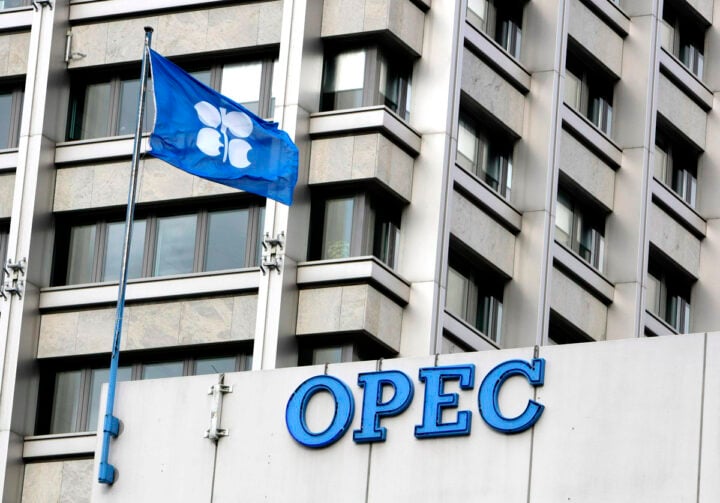Both Brent and Crude Oil extended to new milestone lows overnight, with optimism continuing to fade that the OPEC decision later today will support a cut in production. Overnight, Brent declined to $76.30 while Crude dropped to $72.58.
The downside movement in the Oil markets commenced on Wednesday when Saudi Arabian Oil Minister Ali Al-Naimi repeated previous suggestions that Saudi Arabia will not be willing to cut production, while adding that no-one else should cut production either. As Wednesday progressed, representatives from the United Arab Emirates seemed to support Saudi Arabia’s viewpoint, with reports also speculating that Mexico, Russia and Venezuela are all against a cut in production.
One of the issues ahead of the OPEC decision is that even if a cut in production is announced, it will only be substantial enough to stabilise Oil prices for the time being. The longer term outlook for both Crude and Brent Oil is that the commodity will likely continue to trade in a bearish direction in the longer term. Around this time next year, the current forecast is that the Federal Reserve will have begun raising US interest rates, which will not only increase substantial demand for the USD but also pressure commodity prices. This is probably another reason why there is hesitation from some to cut production, because fears will resurface regarding Oil prices in the future anyway.
If it is confirmed later today that OPEC have decided not to cut production, I would expect both Crude and Brent to remain under some pressure but considering both have declined by around $4 over the previous few days, it could be priced into the markets now. With there being economies at risk to lower commodity prices, currency pairs could still be subject to movement depending on OPEC deciding not to cut production. Both the Reserve Bank of Australia (RBA) and Reserve Bank of New Zealand (RBNZ) have each made repeated calls for its currency to be weakened, in line with the decline in commodity prices. The Russian Rouble and Canadian Dollar could also be subject to volatility.
Advertisement
It was reported earlier this week that although the EU sanctions on Russia will cost the Russian economy around $40bn a year, the decline in Oil will cost around $100bn. This adds further concern over the future of the Russian economy, and makes the central bank’s attempts to rebalance the Russian Ruble more difficult to implement. In regards to the Australian Dollar, Reserve Bank of Australia (RBA) Deputy Governor Phillip Lowe unsettled investors a few days ago when he commented that the Aussie is set to decline in line with commodity prices.
Elsewhere, there were signs of USD softness for the second afternoon running which allowed both the EURUSD and GBPUSD to benefit from risk appetite. The EURUSD rallied to 1.2530, while the Cable made an attempt to clear 1.58 before settling back down and consolidating around 1.5780. There was some surprise when US Initial Jobless Claims unexpectedly bounced to 313,000 last week, which concerning with the US employment sector heading into the Christmas season. However, it should be remembered that even though the US markets are closed for Thanksgiving holidays and although we usually receive a subdued employment report the week after a public holiday, perhaps this one just came early.
The closure of the US markets for the next two days could provide an opportunity for both the Eurodollar and Cable to benefit from risk appetite. UK economic data is also low for the next couple of days and, this could provide this pair with the highest chances of benefiting from risk appetite as concerns remain that the European Central Bank could act next week. Confirmation of the UK economy expanding by an annualised 3% in the previous quarter was a reminder to investors that although the Bank of England (BoE) will not be raising interest rates, the UK fundamentals remain strong and there might still be a chance of a rate increase in the latter period of next year.
Advertisement
The USD profit-taking we have experienced over the past two days is not by any means a sign of demand for the Greenback tailing off. As mentioned before, investors are now clued up that the Federal Reserve will not be raising rates as soon as the bulls would have liked, which will encourage investors to close positions from time to time. Traders are likely viewing this as an opportunity to buy the Dollar in dips at a later date, as the timing of the highly anticipated US rate rise moves closer.
Gold finally extended below $1190 support overnight, with this move also perhaps linked to investors closing positions on metals while the US markets close. Sunday’s Swiss Gold Referendum is also at the forefront of investor’s minds at the moment and with the probability of a “Yes” vote being low, this could be pressuring metals.
*Ahmad is chief market analyst at FXTM.
Advertisement
Add a comment






